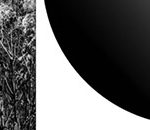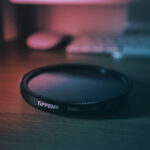Light meters are hugely underrated in photography. Pros love them, but amateurs and enthusiasts find them a bit of a redundancy, especially with all the on-board clever metering modes in modern DSLRs. So, does the humble external light meter stand a chance facing the deluge of modern DSLRs? Yes it does, and for the simple reason that it meters incident light instead of reflected light. Daniel Norton from Adorama shares some important pointers on how to use a light meter to improve your photography:
There are two basic ways to use a hand-held light meter:
1. General Ambient Light Reading
You are shooting outdoors and you need a general meter reading. Just point the white dome toward the camera and take a reading. The reading may not be precise, but it should be OK for most situations.

Using the light meter to get a general ambient reading
2. Incident Light Reading
You are using external lights and need a more precise reading to adjust the exposure. Point the dome toward the light source and take a meter reading. This will give you a neutral reading for the light source in question.

This is how you would point the meter to read external lights.
In situations where there is a lot of light or when you are using two or more lights and you don’t want the test reading for a specific light source to be corrupted by light coming in from the other sources, lower the light sensitive dome inward like this:

Light sensitive dome lowered for reading in multi-light situations
This helps to get a more accurate reading of a specific light source. It works best when you want to set up multiple lights in specific power ratios.
Working Modes
On the top left are the three modes in which the light meter works, ambient, corded, and non-corded flash.
Ambient, uncorded and corded reading functions
Ambient mode takes an overall reading, corded requires the meter to be connected to a flash, and in non-corded mode—which is the wireless mode basically—the meter waits for the flash to fire and then gives a reading.
Spot Metering
Most hand-held light meters can also be used as spot meters. Turn the labelled dial and the meter is now ready to be used as a spot meter.

Using the hand-held light meter in spot meter mode
Spot metering works well when you need to read off a small spot in the frame or when you need a neutral reading off of an 18 percent gray card.
Do you use an external light meter? Or do you prefer to stick with the camera’s built-in meter only?
Like This Article?
Don't Miss The Next One!
Join over 100,000 photographers of all experience levels who receive our free photography tips and articles to stay current:






The one and only time an in camera meter gives the correct exposure is when it is metering something that is mid-tone 18% gray. This can be a scene, an object or a person. But how often does that happen? For instance, my wife’s skin is 1/13 stop above mid-tone, so a close up of her will meter too bright with an in camera meter. When taking a fairly wide angle image, put your camera in it’s horizontal (landscape) position and fix your exposure. Now, turn it to it’s vertical position (portrait). It’s likely that your meter tells you that the exposure has changed although the light in your scene has remained the same. Which one is right? Or, is either of them right? The answer is: If what your camera sees in your scene is 18% gray, yes. If not, no.
What photographer wants that kind of a metering system. One that you cannot trust. Speaking for myself, when I go to the trouble of making a photograph that is worthy of my work, I want the exposure to be on the money. And that applies to lighted and ambient photography.
Hand held light meters definitely have their place. So do in camera meters. They compliment each other. Depending on the type of photography one may be more or less useful than the other. In studio, a hand held meter is most useful if it can measure flash. In the field it is most useful for very long exposures, not supported by the in camera meter. It is, however, an extra piece to drop or misplace and in camera meters are frequently just as accurate and much faster to use as they are integrated into the camera’s electronics and talk directly with its computer.